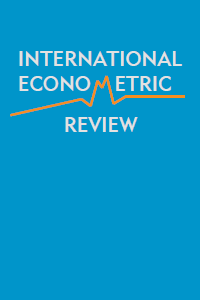Optimal Dynamic Hedging in Selected Markets
Optimal Dynamic Hedging in Selected Markets
This study examines the most optimal hedging portfolio for some selected emerging and developed markets by employing dynamic conditional variances and dynamic conditional covariances. Throughout the study, we used the daily index values of some selected investment instruments. The data contains the period from 02/01/2006 to 01/11/2018. In this essay, to obtain the most efficient hedging portfolio for each emerging country, firstly, we used Dcc-Figarch specifications to measure volatility. Secondly, we checked the robustness of the model by observing its forecast performance. As out-of-sample forecast performance has an ability to assist empirical evidence to outliers and data mining in a detailed way as well as it reflects better the information available to the forecaster in “real-time” out-of-sample forecasting is more appropriate to be used in this regard. Then, we calculated the mean absolute error (MAE) to detect the most fitted model. Thirdly, we mentioned two methods: Optimal hedge ratio and optimal portfolio weight. These methods are two hedging portfolio implications. Lastly, we will propose an economic rationale behind the results.
Keywords:
Dcc-Figarch, Out of Sample Forecast, Mean Absolute Error, Optimal Hedge Ratio Optimal Portfolio Weight,
___
- Arouri,M.,Rault,C, & Teulon, F.(2014). Economic policy uncertainty, oil price shocks and GCC stock markets. Economics Bulletin, AccessEcon, vol. 34(3), pages 1822-1834. Baillie,R., Bollerslev, T., & Mikkelsen, H.O.(1996). Fractionally integrated generalized autoregressive conditional heteroskedasticity. Journal of Econometrics, vol. 74, issue 1, 3-30.
- Bauwens, L., Laurent, S., & Rombouts, J. (2003). Multivariate GARCH Models: A Survey. CORE Discussion Paper No. 2003/31. Available at http://dx.doi.org/10.2139/ssrn.411062
- Bollerslev, T. (1990). Modelling the Coherence in Short-Run Nominal Exchange Rates: A Multivariate Generalized Arch Model. The Review of Economics and Statistics, vol. 72, no. 3, pp. 498–505. Available at https:// www.jstor.org/stable/2109358
- ISSN: 1308-8793
- Başlangıç: 2009
- Yayıncı: Ekonometrik Araştırmalar Derneği
